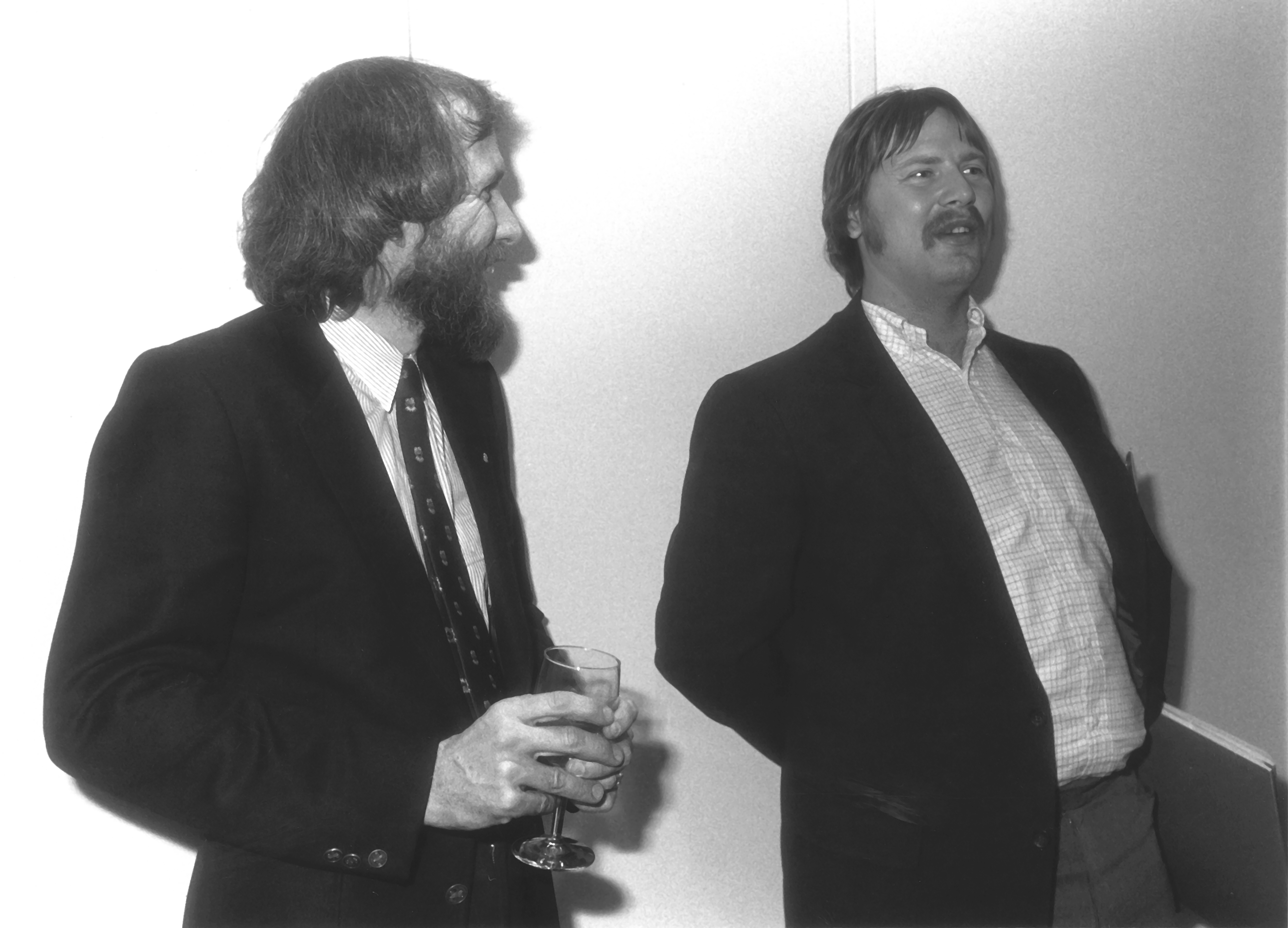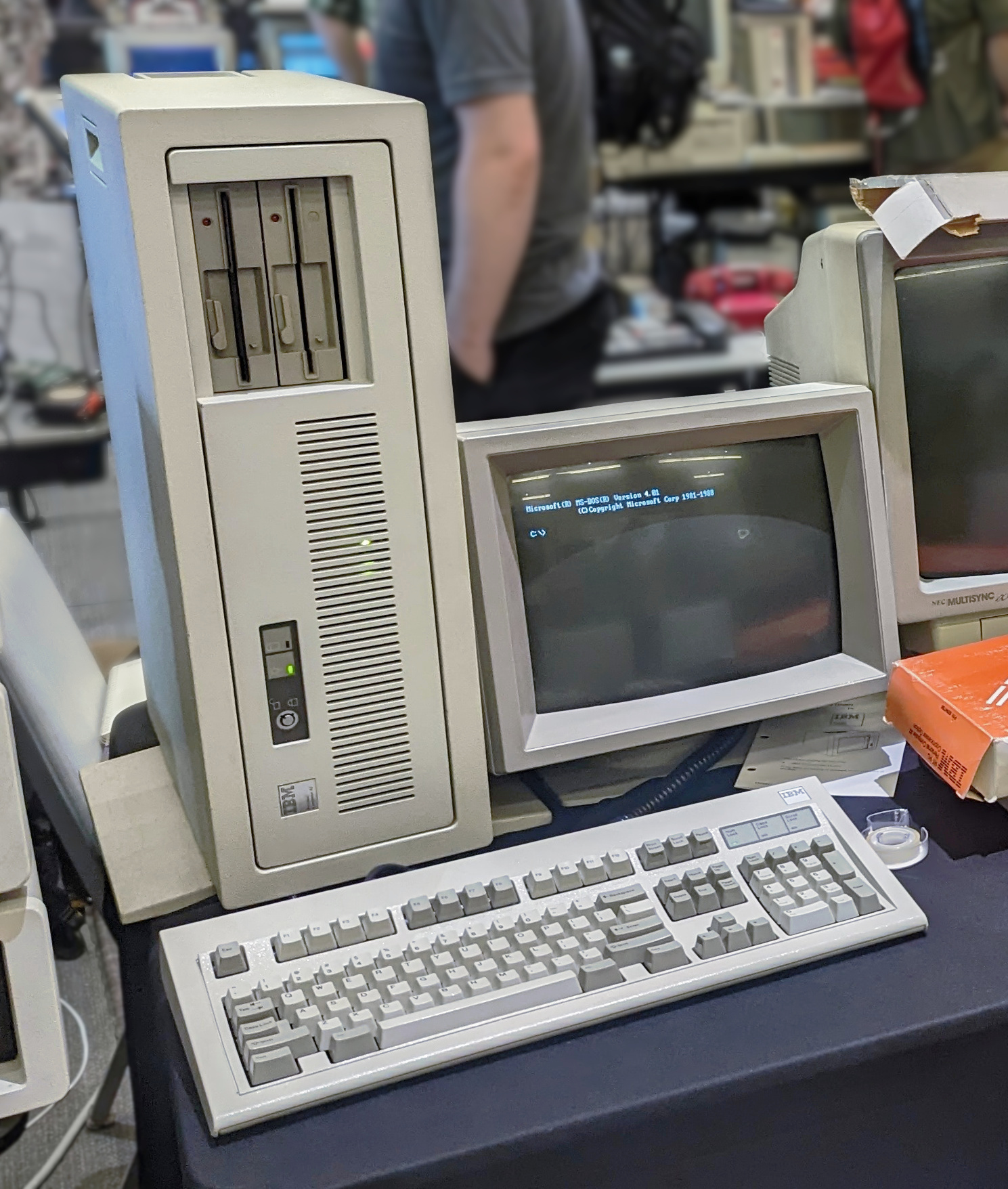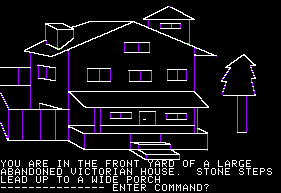|
King's Quest III
''King's Quest III: To Heir Is Human'' is the third installment in the ''King's Quest'' series of graphic adventure games developed and released by Sierra On-Line in 1986. The game was originally released for the Apple II and MS-DOS; it was later ported to several other computer systems. It was the first title game in the series not to feature King Graham as the player character. Gameplay Most of the game's lands and locations in Llewdor appear on a magic map. Once the protagonist Gwydion reaches a new region, he can use the magic map to travel to a previous region. A real-time clock is displayed at the top of the screen, with certain actions occurring based on the clock. ''King's Quest III'' was markedly more difficult than its two predecessors. The player was required to type in magic spells line-by-line from a spell book that came with the game. The spells partially served as a form of copy protection, although the game already had disk-based protection. Gwydion's move ... [...More Info...] [...Related Items...] OR: [Wikipedia] [Google] [Baidu] |
Sierra Entertainment
Sierra Entertainment, Inc. (formerly On-Line Systems and Sierra On-Line, Inc.) was an American video game developer and Video game publisher, publisher founded in 1979 by Ken Williams (game developer), Ken and Roberta Williams. The company is known for pioneering the graphic adventure game genre, including the first such game, ''Mystery House''. It is known for its graphical adventure game series ''King's Quest'', ''Space Quest'', ''Police Quest'', ''Gabriel Knight'', ''Leisure Suit Larry'', and ''Quest for Glory'', and as the original publisher of Valve Corporation, Valve's ''Half-Life (series), Half-Life'' series. After seventeen years as an independent company, Sierra was acquired by CUC International in February 1996 to become part of CUC Software. However, CUC International was caught in an accounting scandal in 1998, and many of the original founders of Sierra including the Williamses left the company. Sierra remained as part of CUC Software as it was sold and renamed sev ... [...More Info...] [...Related Items...] OR: [Wikipedia] [Google] [Baidu] |
An Essay On Criticism
''An Essay on Criticism'' is one of the first major poems written by the English writer Alexander Pope (1688–1744), published in 1711. It is the source of the famous quotations " To err is human; to forgive, divine", "A little learning is a dang'rous thing" (frequently paraphrased as "A little knowledge is a dangerous thing"), and "Fools rush in where angels fear to tread". Composition The first fragmentary drafts of the work were written in Abberley in 1707. It was first published in May 1711. Many of the poem's ideas had existed in prose form since at least 1706. Composed in heroic couplets (pairs of adjacent rhyming lines of iambic pentameter) and written in the Horatian mode of satire, it is a verse essay primarily concerned with how writers and critics behave in the new literary commerce of Pope's contemporary age. The poem covers a range of good criticism and advice, and represents many of the chief literary ideals of Pope's age. Structure and themes The verse "es ... [...More Info...] [...Related Items...] OR: [Wikipedia] [Google] [Baidu] |
Enhanced Graphics Adapter
The Enhanced Graphics Adapter (EGA) is an IBM PC compatible, IBM PC Video card, graphics adapter and ''de facto'' computer display standard from 1984 that superseded the Color Graphics Adapter, CGA standard introduced with the IBM Personal Computer, original IBM PC, and was itself superseded by the Video Graphics Array, VGA standard in 1987. In addition to the original EGA card manufactured by IBM, many compatible third-party cards were manufactured, and EGA graphics modes continued to be supported by VGA and later standards. History EGA was introduced in October 1984 by IBM,High-Resolution Standard Is Latest Step in DOS Graphics Evolution, ''InfoWorld'', June 26, 1989, p. 48.News Briefs, Big Blue Turns Colors, ''InfoWorld'', October 8, 1984. shortly after its new IBM Personal Computer AT, PC/AT. The EGA could be installed in previously released IBM PCs, but required a Read-only memory, ROM upgrade on the Motherboard, mainboard. Chips and Technologies' first product, announced ... [...More Info...] [...Related Items...] OR: [Wikipedia] [Google] [Baidu] |
King's Quest I
''King's Quest: Quest for the Crown'' is an adventure game developed by Sierra On-Line and published originally for the IBM PCjr in 1984 and later for several other systems between 1984 and 1989. The game was originally titled ''King's Quest''; the subtitle was added to the game's box art in the 1987 re-release, but did not appear in the game. It is the first official part of the long-running ''King's Quest'' series (not counting 1980's ''Wizard and the Princess''), in which a young knight, Sir Graham, must save the Kingdom of Daventry to become the king. Designed by Roberta Williams, the game was revolutionary and highly influential in the evolution of the graphic adventure game genre by introducing more detailed graphics and animation. An official remake titled ''King's Quest I: Quest for the Crown'' was released in 1990. An unofficial remake was released by AGD Interactive, Tierra Entertainment in 2001. Gameplay ''King's Quest'' features interactive graphics that were a ... [...More Info...] [...Related Items...] OR: [Wikipedia] [Google] [Baidu] |
Time Zone (computer Game)
''Time Zone'' is a multi-disk graphical adventure game written and directed by Roberta Williams for the Apple II. Developed in 1981 and released in 1982 in video gaming, 1982 by On-Line Systems (later Sierra Entertainment), the game was shipped with six double-sided floppy disks and contained 1,500 areas (screens) to explore along with 39 scenarios to solve. Produced at a time when most games rarely took up more than one side of a floppy, ''Time Zone'' is one of the first games of this magnitude released for home computer systems. Ports were released for Japanese home computers PC-88, PC-98 and FM-7 in 1985. Gameplay ''Time Zone'' allows players to travel through time and across the globe solving puzzles while meeting famous historical figures such as Benjamin Franklin, Cleopatra, and Julius Caesar. The game has static pictures and a text parser that understands two-word commands. Development The game used the company's existing ''Hi-Res Adventures'' engine. Roberta Williams was ... [...More Info...] [...Related Items...] OR: [Wikipedia] [Google] [Baidu] |
Sierra On-line
Sierra Entertainment, Inc. (formerly On-Line Systems and Sierra On-Line, Inc.) was an American video game developer and publisher founded in 1979 by Ken and Roberta Williams. The company is known for pioneering the graphic adventure game genre, including the first such game, '' Mystery House''. It is known for its graphical adventure game series '' King's Quest'', '' Space Quest'', '' Police Quest'', '' Gabriel Knight'', '' Leisure Suit Larry'', and '' Quest for Glory'', and as the original publisher of Valve's ''Half-Life'' series. After seventeen years as an independent company, Sierra was acquired by CUC International in February 1996 to become part of CUC Software. However, CUC International was caught in an accounting scandal in 1998, and many of the original founders of Sierra including the Williamses left the company. Sierra remained as part of CUC Software as it was sold and renamed several times over the next few years. Sierra was formally disestablished as a compa ... [...More Info...] [...Related Items...] OR: [Wikipedia] [Google] [Baidu] |
Leisure Suit Larry
''Leisure Suit Larry'' is an adult-themed sex comedy video game series created by Al Lowe. Drawing inspiration from '' Softporn Adventure'', the ''Leisure Suit Larry'' series centers on Larry Laffer—a middle-aged man known for his balding head, penchant for double entendre, and iconic leisure suits. The stories typically focus on his unsuccessful attempts to seduce young women, portraying him as an unsuccessful pickup artist. A common link between the games are Larry's explorations of luxurious and cosmopolitan hotels, ships, beaches, resorts, and casinos. The series became notable for its blend of humor, parody, and sexual fantasy, a departure from the norm in Sierra's otherwise family-friendly catalog. Under Lowe’s creative direction, the franchise launched its first six games between 1987 and 1996, becoming a cult classic. Following a hiatus, the series was revived with new installments overseen by a variety of development teams without Lowe's involvement. As of 201 ... [...More Info...] [...Related Items...] OR: [Wikipedia] [Google] [Baidu] |
8-bit
In computer architecture, 8-bit integers or other data units are those that are 8 bits wide (1 octet). Also, 8-bit central processing unit (CPU) and arithmetic logic unit (ALU) architectures are those that are based on registers or data buses of that size. Memory addresses (and thus address buses) for 8-bit CPUs are generally larger than 8-bit, usually 16-bit. 8-bit microcomputers are microcomputers that use 8-bit microprocessors. The term '8-bit' is also applied to the character sets that could be used on computers with 8-bit bytes, the best known being various forms of extended ASCII, including the ISO/IEC 8859 series of national character sets especially Latin 1 for English and Western European languages. The IBM System/360 introduced byte-addressable memory with 8-bit bytes, as opposed to bit-addressable or decimal digit-addressable or word-addressable memory, although its general-purpose registers were 32 bits wide, and addresses were contained in the lower 24 bits ... [...More Info...] [...Related Items...] OR: [Wikipedia] [Google] [Baidu] |
Macintosh
Mac is a brand of personal computers designed and marketed by Apple Inc., Apple since 1984. The name is short for Macintosh (its official name until 1999), a reference to the McIntosh (apple), McIntosh apple. The current product lineup includes the MacBook Air and MacBook Pro laptops, and the iMac, Mac Mini, Mac Studio, and Mac Pro desktops. Macs are currently sold with Apple's UNIX-based macOS operating system, which is Proprietary software, not licensed to other manufacturers and exclusively Pre-installed software, bundled with Mac computers. This operating system replaced Apple's original Macintosh operating system, which has variously been named System, Mac OS, and Classic Mac OS. Jef Raskin conceived the Macintosh project in 1979, which was usurped and redefined by Apple co-founder Steve Jobs in 1981. The original Macintosh 128K, Macintosh was launched in January 1984, after Apple's 1984 (advertisement), "1984" advertisement during Super Bowl XVIII. A series of increment ... [...More Info...] [...Related Items...] OR: [Wikipedia] [Google] [Baidu] |
IBM AT
The IBM Personal Computer AT (model 5170, abbreviated as IBM AT or PC/AT) was released in 1984 as the fourth model in the IBM Personal Computer line, following the IBM PC/XT and its IBM Portable PC variant. It was designed around the Intel 80286 microprocessor. Name IBM did not specify an expanded form of ''AT'' on the machine, press releases, brochures or documentation, but some sources expand the term as ''Advanced Technology'', including at least one internal IBM document. History IBM's 1984 introduction of the AT was seen as an unusual move for the company, which typically waited for competitors to release new products before producing its own models. At $4,000–6,000, it was only slightly more expensive than considerably slower IBM models. The announcement surprised rival executives, who admitted that matching IBM's prices would be difficult. No major competitor showed a comparable computer at COMDEX Las Vegas that year. Features The AT is IBM PC compatible, with t ... [...More Info...] [...Related Items...] OR: [Wikipedia] [Google] [Baidu] |
Mystery House
''Mystery House'' is an adventure game released by On-Line Systems in 1980. It was designed, written and illustrated by Roberta Williams, and programmed by Ken Williams for the Apple II. ''Mystery House'' is the first Graphic adventure game, graphical adventure game and the first game produced by On-Line Systems, the company which would evolve into Sierra On-Line. It is one of the earliest Horror fiction, horror video games. Plot The game starts near an abandoned Victorian mansion. The player is soon locked inside the house with no other option than to explore. The mansion contains many interesting rooms and seven other people: Tom, a plumber; Sam, a mechanic; Sally, a seamstress; Dr. Green, a surgeon; Joe, a grave-digger; Bill, a butcher; Daisy, a cook. Initially, the player has to search the house in order to find a hidden cache of jewels. Soon, dead bodies (of the other people) begin appearing and it is obvious there is a murderer on the loose in the house. The playe ... [...More Info...] [...Related Items...] OR: [Wikipedia] [Google] [Baidu] |







